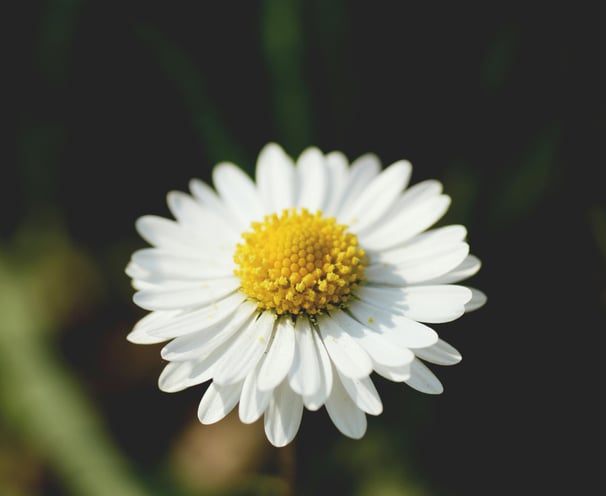
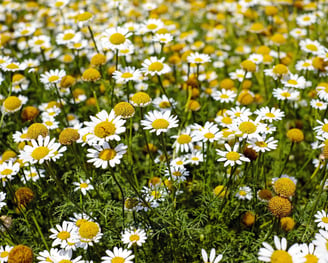
Chamomile, a beloved herb known for its delicate appearance and soothing properties, originates from regions across Europe and Asia. With its dainty, daisy-like flowers and feathery foliage, chamomile adds a touch of charm to gardens and landscapes. Beyond its ornamental value, chamomile is prized for its medicinal properties, revered for its ability to promote relaxation and alleviate stress. Chamomile tea, brewed from the dried flowers, is a popular herbal remedy used to soothe digestive discomfort and promote restful sleep. Its gentle, floral aroma is also cherished in aromatherapy, where it helps to create a calming atmosphere and induce feelings of tranquility. Additionally, chamomile is valued in skincare products for its anti-inflammatory and antioxidant properties, making it a common ingredient in creams, lotions, and salves. Whether enjoyed as a soothing tea, a fragrant addition to the garden, or a therapeutic ingredient in skincare, chamomile delights with its gentle nature and healing qualities, bringing comfort and tranquility to those who embrace its presence.
Chamomile
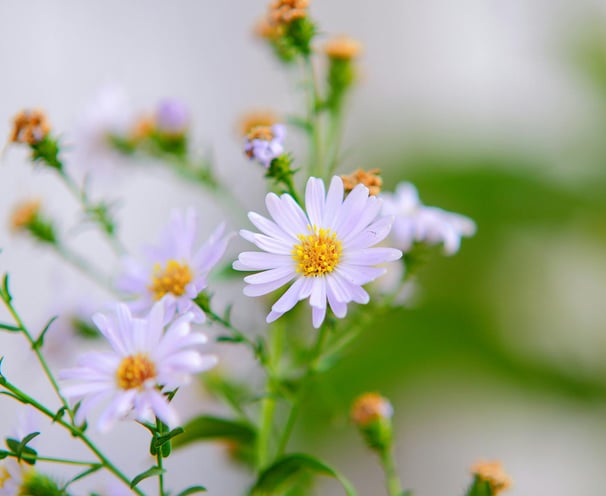

Chamomile thrives in well-drained, moderately fertile soil with a pH level between 5.6 and 7.5. It prefers sandy or loamy textures that provide good drainage, preventing water-logging which can lead to root rot. Amending heavy clay or compacted soil with organic matter such as compost or aged manure helps improve soil structure and fertility. Chamomile plants are sensitive to waterlogged conditions, so it's essential to ensure the soil drains well. Planting chamomile in a location with full sunlight exposure promotes healthy growth and abundant flowering. Conducting a soil test before planting allows for adjustments to nutrient levels and pH, ensuring optimal growing conditions for chamomile. Regular watering is necessary to keep the soil consistently moist but not waterlogged. Mulching around the base of chamomile plants helps retain soil moisture and suppress weeds. With proper soil preparation and care, chamomile will thrive and reward you with its delicate, aromatic flowers.
Soil Needs
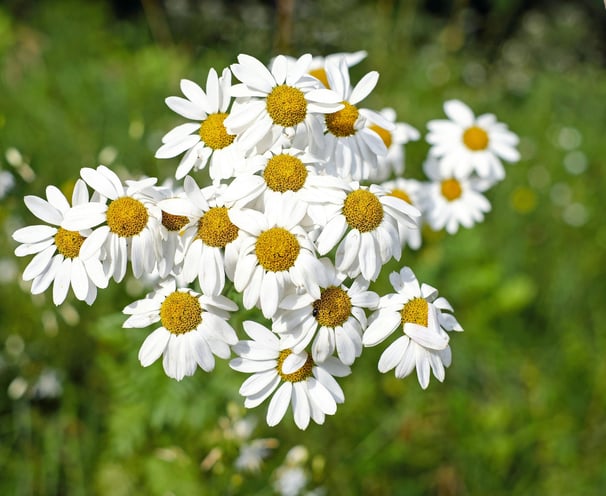

Chamomile has moderate water needs, requiring regular watering to maintain soil moisture levels, especially during periods of active growth. Water chamomile plants deeply but infrequently, allowing the soil to dry out slightly between watering sessions to prevent water-logging and root rot. It's crucial to water the soil directly at the base of the plant to avoid wetting the foliage, which can increase the risk of fungal diseases. During hot, dry periods, increase watering frequency to keep the soil consistently moist, but be cautious not to over-water. Mulching around the base of chamomile plants helps retain soil moisture and suppress weeds. Regularly monitor soil moisture levels and adjust watering practices accordingly to ensure optimal growth and health of your chamomile plants.
Water Needs
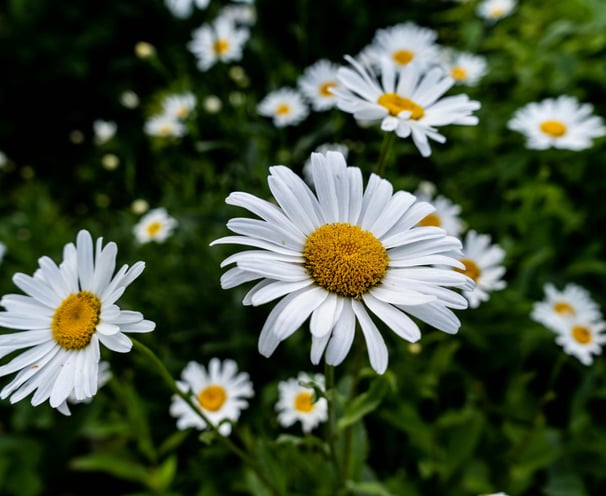

Chamomile generally has low fertilizer needs, as it thrives in moderately fertile soil. Excessive fertilization can lead to excessive foliage growth at the expense of flower production, so it's best to apply fertilizer sparingly. If your soil lacks nutrients, you can incorporate a balanced, slow-release fertilizer into the soil before planting to provide essential nutrients. Alternatively, a light application of a low-nitrogen, high-phosphorus fertilizer in early spring can support healthy root development and flower production. Avoid fertilizers high in nitrogen, as they can stimulate excessive foliage growth. Organic options like compost or aged manure can also be beneficial, applied as a thin layer around the base of the plant in spring to enrich the soil. Overall, it's important to prioritize well-drained soil and proper watering practices over heavy fertilization to ensure the best growth and flower production from your chamomile plants.
Fertilizer Needs
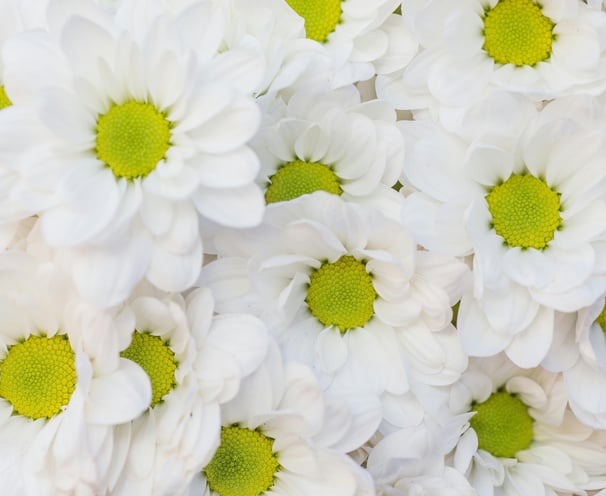

Chamomile, much like lavender, comes in various varieties, each with its own distinct characteristics and uses. Some popular chamomile varieties include:
German Chamomile (Matricaria chamomilla): Known for its apple-like fragrance and daisy-like flowers, German chamomile is commonly used in teas and herbal remedies.
Roman Chamomile (Chamaemelum nobile): With its delicate, fern-like foliage and small, white flowers, Roman chamomile is often used as a ground cover or in herbal lawns.
Moroccan Chamomile (Ormenis multicaulis): Native to Morocco, this chamomile variety has a stronger, more pungent aroma compared to German or Roman chamomile. It's often used in aromatherapy and herbal medicine.
Pineapple Chamomile (Matricaria discoidea): Named for its pineapple-like scent, this variety of chamomile is prized for its aromatic foliage and small, button-like flowers. It's used in teas, sachets, and potpourri for its refreshing fragrance.
Golden Marguerite (Anthemis tinctoria): While not a true chamomile, golden marguerite resembles chamomile in appearance and is valued for its bright yellow flowers.
These are just a few examples of the diverse chamomile varieties available, each offering its own unique qualities and benefits for herbalists, gardeners, and enthusiasts alike.
Chamomile Varieties
